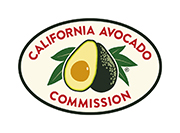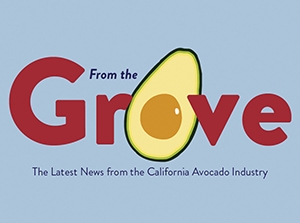Excessive Heat Watches and Warning for September 2022
The National Weather Service (NWS) has issued excessive heat watches and warnings in the coming days for the entire California avocado growing region. For coastal San Luis Obispo, Santa Barbara and Ventura Counties, the NWS has issued an excessive heat watch from Saturday September 3 through Monday September 5. They are predicting dangerously hot conditions with temperatures up to 98 °F for coastal San Luis Obispo County and up to 96 °F for coastal Santa Barbara and Ventura Counties.
For inland San Luis Obispo, Santa Barbara, and Ventura Counties — including, but not limited to, the Santa Clarita Valley, Lake Casitas/Ojai Valley, Santa Ynez Valley, Santa Ynez Mountains — an excessive heat warning has been issued for the same period. Dangerously hot conditions with temperatures up to 112 °F on Saturday and up to 115 °F on Sunday and Monday are predicted. For Their model predicts, with moderate confidence, that a cooling trend will begin Tuesday or Wednesday following Labor Day.
For Orange, San Diego, San Bernardino and Riverside Counties, an excessive heat warning is in effect now through Monday evening. For inland Riverside and San Bernardino Counties, temperatures as high as 110 °F are predicted; and for inland Orange County temperatures as high as 104 °F are predicted.
Employers should take special precautions to prevent heat-related illnesses from occurring. It’s important to provide ample water, provide shade and frequent rest breaks, and ensure supervisors and employees are aware of heat illness symptoms and those that require immediate medical attention. When possible, work should be rescheduled for after the heatwave passes. For more information, read “Reduce heat illness risk for employees” on the California avocado growers website.
To ensure California avocados maintain their superior quality it is imperative growers manage their trees and harvest their fruit according to best management practices as outlined below.
IRRIGATION
Growers should be irrigating their trees now, in advance of the heat, to ensure their trees are fully hydrated. It is recommended that an additional 50% of the budgeted amount of water be applied the day before a heat wave. For extended heat waves, daily pulses of irrigation are recommended to maintain the trees’ water status. A well-watered tree will tolerate the stress of a heat wave much better than a tree that is suffering from water stress. Signs of heat damage to trees include fruit drop, shoot damage, leaf burn and in severe cases leaf drop.
HARVESTING
Every attempt should be made to harvest fruit when temperatures are below 90 °F, and no harvesting should take place when temperatures exceed 95 °F. Temperature in the shade should be monitored during harvesting and, when possible, harvesting crews should be moved to the coolest, least exposed areas of the grove.
Field bins should be placed under the trees while being filled to protect the harvested fruit from sunburn. Once filled, bins should be moved to a shade structure (open-sided roofed building) or covered with bin covers or light-colored tarps if they cannot be immediately transported to the packinghouse. Never leave filled bins exposed to the direct sun. The surface layer of fruit can easily heat up to more than 15 °F above ambient temperature when exposed to direct sun. Acute sunburn will only show on fruit after it is packed and is a major quality detractor.
To avoid water loss and decreased fruit quality do not hold fruit too long after harvest. Transport fruit to the packinghouse at least once per day, if not twice daily. Bins should not be left in the grove for more than 8 hours after harvest. Cover bins during transport to avoid sunburn and to reduce water loss.
For more information about managing heat in avocado groves, growers can view the following articles on the California avocado growers’ website:



